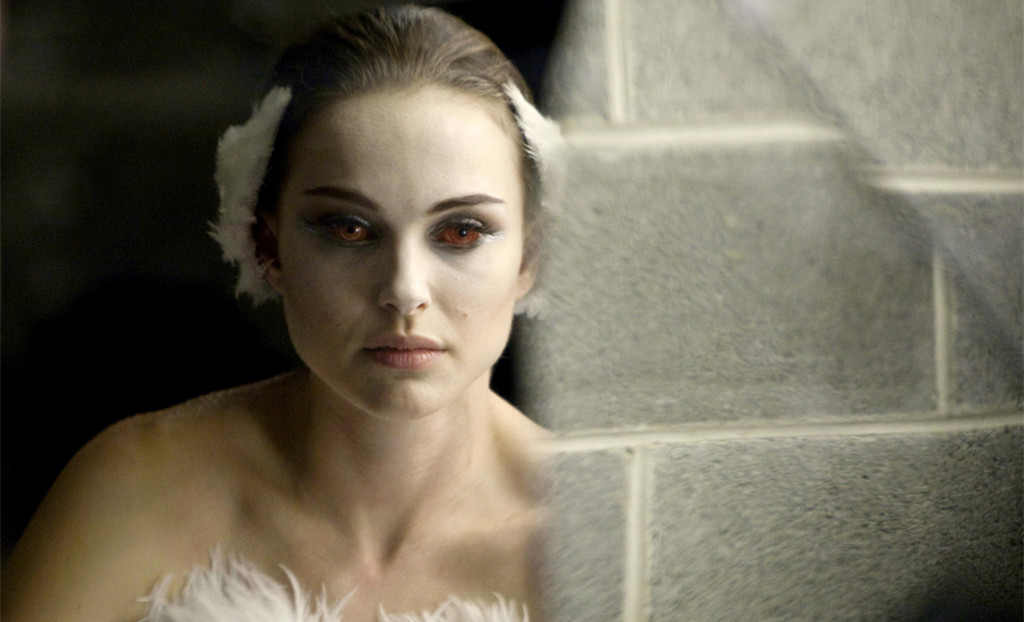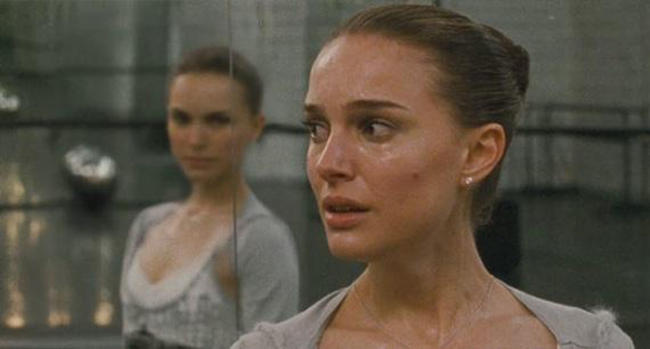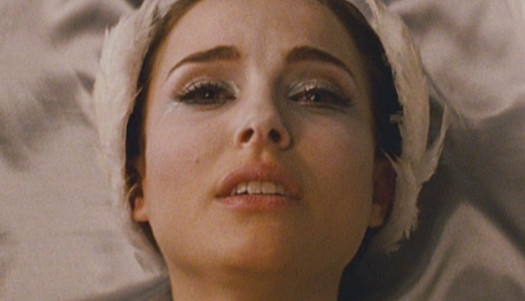5. Creation and destruction dialectic

In a spell-binding opening shot, we can see Nina dancing the White Swan while the magician Rothbard is toying with her while she is dancing; he spins her around maniacally. In this shot, Rothbard represents madness, the chain of events that follows is anticipated; it can even be claimed that the whole film is summed up in this opening shot. In the ballet “Swan Lake”, Rothbard is an evil magician who turns a princess into a swan and only “true love can break the spell.”
In “Black Swan”, the role of Rothbard belongs to Thomas; he is the one who transforms Nina, not into a swan, but changes her personality structure in a way that facilitates her destruction. In the scene in which Lily (Mila Kunis’ character) has sex with Thomas, Nina sees him as Rothbard.
This is symptomatic; it is as if Nina recognizes for a moment that the one who engineered her destruction is precisely Thomas. As Nina’s new personality is created, the other one is destroyed. For creation to come to fruition, destruction is needed, but that destruction can be irreparable and may lead, as in Nina’s case, to complete destruction of what is created. Since she falls when performing the White Swan, we can tell that the process of the destruction of her personality occurred and that she is completely transformed.
After Nina is represented as the new Swan Queen, we can see the statue that resembles Rothbard. In William Shakespeare’s “Othello”, Iago is an utterly malicious character who engineers Othello’s destruction. He is similar to Rothbard in many ways; for both of them the motive to act is to do evil for the sake of evil (although Rothbard has his own interest at stake; he wants his daughter Odile – the Black Swan – to marry the prince). As Edgar Allan Poe says in one of his short stories, man is a being who enjoys evil for evil’s sake.
6. Portrayal of the fall into madness

In his book “Beyond Good and Evil”, Friedrich Nietzsche writes: “When you gaze long into an abyss, the abyss also gazes into you.” This quote can be interpreted by comparing it to Nina’s psychological state. If one confronts his deepest desires and darkest aspects of his psyche (“gazes into abyss”), that very darkness may consume the individual insofar that he cannot be recognized anymore (“What happened to my sweet girl?” says Nina’s mother).
In the first part of the film (and sometimes later), Nina sees herself in the faces of people in the streets, but dressed in black and terrifying. This can be seen as a distorted version of the Lacanian recognition in the mirror. She faces her deepest desires and that facilitates her fall into madness.
The approaches that try to “pin down” a specific mental disorder to Nina completely miss the point since her mental state is much more complex than a simple signifier (e.g. schizophrenia) can “explain.” This approach is reductive and pointless; it tells nothing about Nina, it is only indicative of a general tendency to simplify and make things more “clear,” but in the end, they are much more blurred and undistinguished.
The process of deterioration can be swift, painful and immensely destructive. This happens to Nina at the end of the film; she experiences hallucinations, becomes paranoid and distrustful; self-harming was her daily routine from the start, and thus her condition has roots in her psyche, her upbringing and the conditions she lives in.
Her teacher Thomas says the following about Beth, the former main ballerina of the company: “Because everything Beth does comes from within. From some dark impulse. I guess that’s what makes her so thrilling to watch. So dangerous. Even perfect at times, but also so damn destructive.” This “dark impulse” Thomas speaks of consumes Nina as well; becoming more arrogant and self-confident, she also becomes “twisted,” her psyche simply not fit for such pressure and reshaping of personality.
7. Perfection

The last words Nina says are: “It was perfect.” Her neurotic fantasy has been fulfilled in a beautiful and thrilling way, since she is dying when the character she impersonates should die as well. Thus, the most terrifying and beautiful version of “Swan Lake” comes to being; the death of the character in the film and the death of Odette merge into one; an artistic tour de force.
Perfection is unachievable by definition, only geometrical shapes among other things (in Alhambra palace, for instance) are perfect, but sometimes artistic endeavour can be close to or achieve “perfection,” at least in the eye of the beholder. Aronofsky’s film seems to strive for perfection, in every shot, the music and lighting. At some moments, it even achieves it, with restrained overtones, but with Wagnerian vigour.
Author Bio: Hrvoje Galich is a student of political science and writes expressionist poetry. He believes that Tristan und Isolde is the most beautiful artistic piece in the history of man. He loves movies by Andrei Tarkovsky, Michelangelo Antonioni, Ingmar Bergman and Shohei Imamura. He adores his cat “Meow”, the only cat in the world that can say her name.